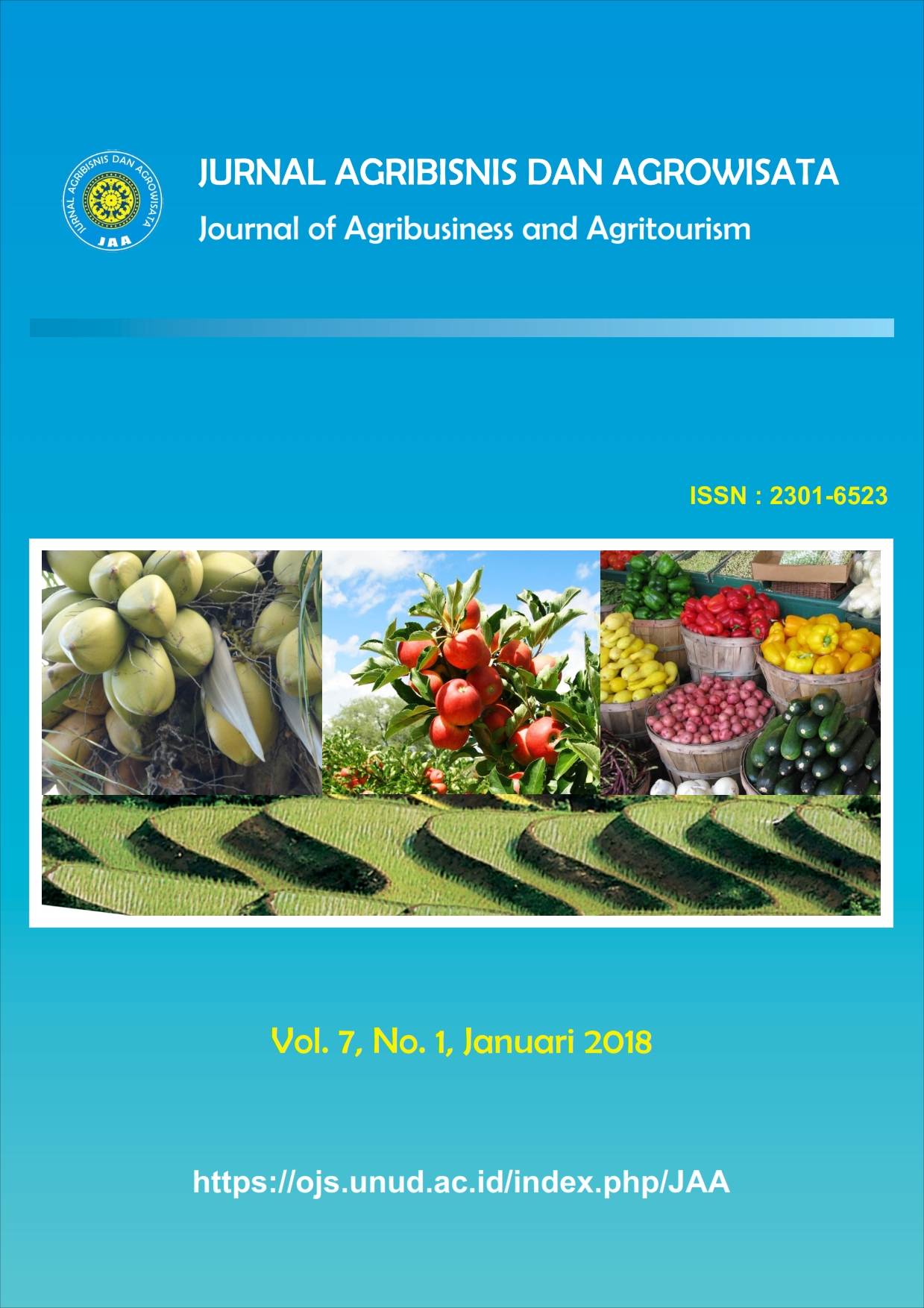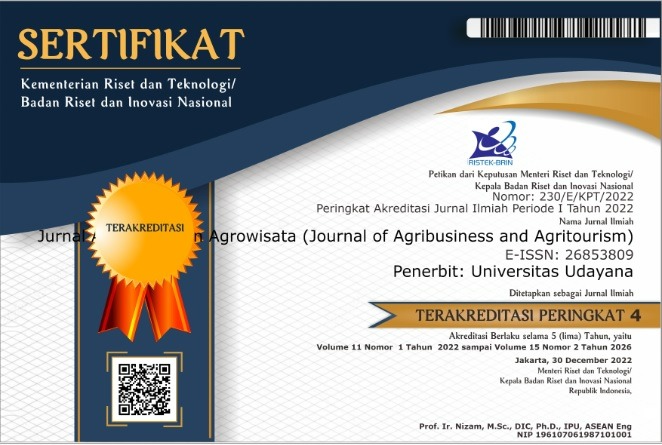Analisis Efisiensi Pemasaran Produk Spa yang Laris Terjual pada PT Bali Tangi
Abstract
Marketing Efficiency Analysis of Best Seller Spa Products at PT Bali Tangi
This research is aimed to find out the marketing channels, to calculate marketing
margin, producer’s share, and to analyze marketing efficiency of best seller spa
products at PT Bali Tangi. This company produces three types of spa products
namely scrub, masker and massage oil that are in high demand. Samples were
selected purposively for retailers from PT Bali and snowball sampling for retailers
from the wholesaler. Total samples were 30 from Denpasar City and Badung
Regency including wholesaler, retailers, hotels and villas. The results showed that
there are three types of marketing channels of best seller spa products of PT Bali
Tangi. Channel I: producer – end consumers (for three spa products), channel II:
producer – retailers and institutional consumers – end consumers (for three spa
products), and channel III: producer - wholesaler - institutional consumers – end
consumers (for only two spa products). The channel II comprises 52.95% of the total
sales, whereas 8.97% and 38.07% respectively for channel I and III. The highest
marketing margin was seen from the channel III at amount of Rp 80,000/unit, while
no marketing margin coming from the channel I as it is direct marketing. The
channel II has marketing margin Rp 25,000. The highest producer’s share is on
channel I by 100% and the lowest is on channel III by 57.89%. The channel II has
producer’share of 86.49%. In terms of marketing efficiency, this research does not
compare to channel I because channel I does not have a marketing agency. Channel
II of the marketing channel is the most efficient based on three analysis of marketing
margins, producer’s share, and price efficiency. Channel III is only efficient at
operational efficiency of 2,944.57%. Meanwhile, channel III is inefficient. Despite of
inefficiency, channel III is the main supporting channel for the company to maintain
due to high volume of trading compared to channel I.







